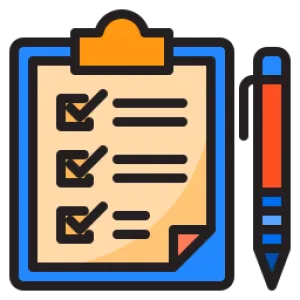
Arizona State AED Laws
Summary of Requirements
| Physician | A person or entity that acquires an automated external defibrillator shall enter into an agreement with a physician who shall oversee the aspects of public access to defibrillation. |
|
|
CPR/AED Training | No Current Legislation |
| EMS Notification | Each trained responder USER who uses an automated external defibrillator on a person in sudden cardiac arrest must call telephone number 911 as soon as possible. |
|
| Maintenance Program | Must ensure the automated external defibrillator is maintained in good working order and tested according to the manufacturer's guidelines on a regularly scheduled basis. |
|
| |
Notification of Use | A person or entity that acquires an automated external defibrillator shall submit a written report to the BUREAU OF EMERGENCY MEDICAL SERVICES AND TRAUMA SYSTEMS IN THE DEPARTMENT OF HEALTH SERVICES within five working days after its use. |
| Rescuer | Purchaser | Property Owner | Physician | Trainer |
| |
||||
AZ Rev Stat § 36-2263 - 2015 Provides Good Samaritan protection for use of an AED and establishes guidelines for AED programs: A. The following persons and entities are not subject to civil liability for any personal injury that results from any act or omission that does not amount to willful misconduct or gross negligence: 1. A physician who provides oversight. 2. A person or entity that provides training in cardiopulmonary resuscitation and use of an automated external defibrillator. 3. A person or entity that acquires an automated external defibrillator pursuant to this article. 4. The owner of the property or facility where the automated external defibrillator is located. 5. A person or entity that provides the automated external defibrillator pursuant to this article. 6. A nonprofit entity that, in the placement of an automated external defibrillator pursuant to this article, acts as an intermediary between the provider of an automated external defibrillator and the person or entity that acquired the automated external defibrillator or the owner of the property or facility where the automated external defibrillator is located. 7. A good Samaritan. For the purposes of this paragraph, "good Samaritan" means a person who uses an automated external defibrillator to render emergency care or assistance in good faith and without compensation at the scene of any accident, fire or other life-threatening emergency. 8. A trained user. B. The exception from civil liability provided in subsection A does not affect a manufacturer's product liability regarding the design, manufacturing or instructions for use and maintenance of an automated external defibrillator. |
||||
| Laws / Legislation |
||
| Reference |
Date | Summary |
| S.B. 1137 | 2019 | Outlines CPR training requirements for students graduating high school: A. On or before July 1, 2019, school districts and charter schools shall provide public school pupils with one or more training sessions in cardiopulmonary resuscitation, through the use of psychomotor skills in an age-appropriate manner, during high school. This training shall be based on the most current national evidence-based emergency cardiovascular care guidelines for cardiopulmonary resuscitation. B. School district or charter school instruction that results in cardiopulmonary resuscitation certification must be provided by a certified cardiopulmonary resuscitation trainer. This C. The instruction provided under subsection A of this section must include the hands-on practicing of cardiopulmonary resuscitation, except for students who are enrolled in an online school as defined in section 15-808. |
| R4 AAC 11-1301 | 2016 | Outlines AED requirements for dental offices: A. Before administering general anesthesia, or deep sedation by any means, in a dental office or dental clinic, a dentist shall possess a Section 1301 permit issued by the Board. The dentist may renew a Section 1301 permit every five years by complying with R4-11-1307. B. To obtain or renew a Section 1301 permit, a dentist shall: a. Contains the following properly operating equipment and supplies during the provision of general anesthesia and deep sedation: |
| R4 AAC 11-1302 | 2016 | Outlines instructions for dental offices to retrieve a permit to provide treatment: B. To obtain or renew a Section 1302 permit, the dentist shall: a. Contains the following properly operating equipment and supplies during the provision of parenteral sedation by the permit holder or general anesthesia or deep sedation by a physician anesthesiologist or Certified Registered Nurse Anesthetist (CRNA): |
| R4 AAC 11-1303 | 2016 | Outlines instructions for dental offices to retrieve a permit to provide treatment: B. To obtain or renew a Section 1303 permit, a dentist shall: a. Contains the following properly operating equipment and supplies during the provision of sedation: |
| R4 AAC 11-1304 | 2016 | Outlines instructions for dental offices to retrieve a permit to provide treatment: B. To obtain or renew a Section 1304 permit, a dentist shall: 2. On forms provided by the Board, provide a dated and signed affidavit attesting that any dental office or dental clinic where the dentist provides treatment during administration of general anesthesia or sedation by a physician anesthesiologist or CRNA: a. Contains the following properly operating equipment and supplies during the provision of general anesthesia and sedation: |
| AZ Rev Stat § 36-2261 | 2015 | Defines the terms: Automated External Defibrillator, Defibrillation, Physician, Trained User, and Training: 1. "Automated external defibrillator" means a medical device heart monitor and defibrillator that: (a) Is approved for premarket modification by the United States food and drug administration pursuant to 21 United States Code section 360(k). (b) Is capable of recognizing the presence or absence of ventricular fibrillation or rapid ventricular tachycardia and is capable of determining, without intervention by an operator, if defibrillation should be performed. (c) Automatically charges and delivers an electrical impulse to a person's heart when it determines that defibrillation should be performed. 2. "Defibrillation" means the administration of a controlled electrical charge to the heart to restore a viable cardiac rhythm. 3. "Physician" means a physician who is licensed pursuant to title 32, chapter 13 or 17, and who provides medical oversight services pursuant to section 36-2262. 4. "Trained user" means a person who is the expected user of an automated external defibrillator and who has completed training in its use. 5. "Training" means a state approved course in cardiopulmonary resuscitation and the use of an automated external defibrillator for the lay rescuer and first responder, including the course adopted by the American heart association and in effect as of December 31, 1998. |
| AZ Rev Stat § 36-2262 | 2015 | Outlines instructions to ensure the public health and safety for a person that acquires an AED: 1. Enter into an agreement with a physician who shall oversee the aspects of public access to defibrillation. 2. Require each trained user who uses an automated external defibrillator on a person in cardiac arrest to call telephone number 911 as soon as possible. 3. Submit a written report to the bureau of emergency medical services and trauma systems in the department of health services within five working days after its use. 4. Ensure that the automated external defibrillator is maintained in good working order and tested according to the manufacturer's guidelines. |
| AZ Rev Stat § 36-2264 | 2015 | Outlines the exemptions from regulation: A. A person who obtains an automated external defibrillator for home use pursuant to a physician's prescription is exempt from the requirements of this article. B. A person who is employed as a firefighter, emergency medical care technician or ambulance attendant by a fire district established pursuant to title 48, chapter 5 is exempt from the requirements of this article. C. A person who is employed as a firefighter, emergency medical care technician or ambulance attendant by a public or private fire department or an ambulance service regulated by this chapter is exempt from the requirements of this article. |
| AZ Rev Stat § 34-401 | 2011 | Outlines AED requirements for state buildings: A. Any state building that is constructed or any state building that undergoes a major renovation at a cost of at least two hundred fifty thousand dollars after the effective date of this section must be equipped with automated external defibrillators. B. For fiscal year 2003-2004 and each fiscal year thereafter, the joint legislative budget committee and the governor's office of strategic planning and budgeting shall include funding for the placement of automated external defibrillators in capital budgets for new state buildings. |

